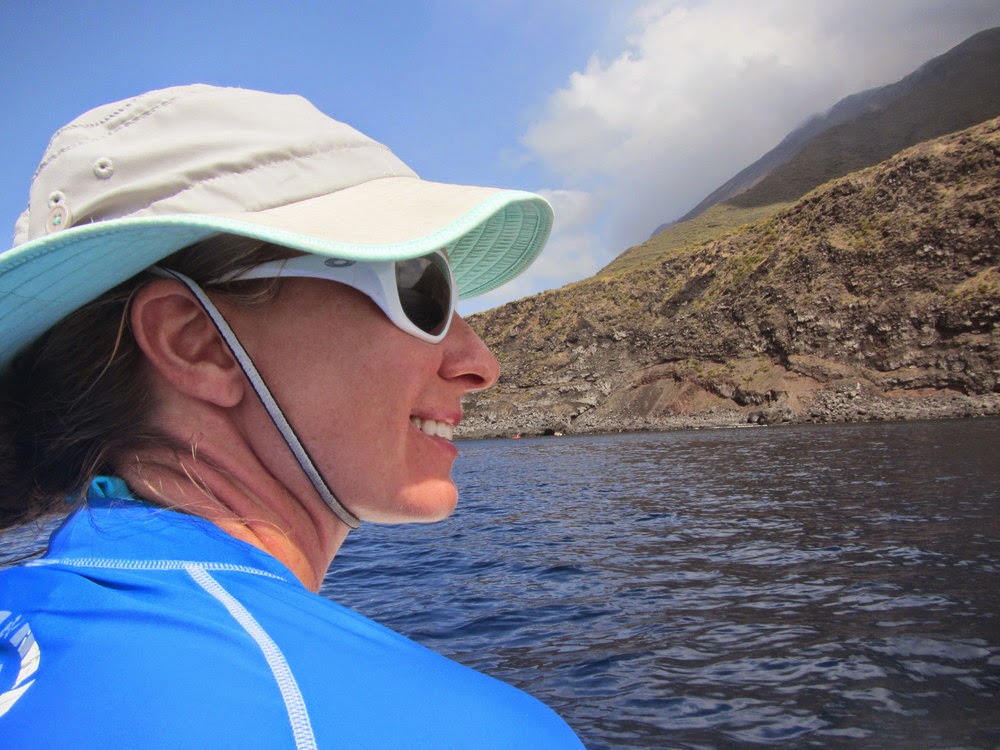 |
| Entering the straight of Messina after our crossing from Corfu, Greece. Notice how flat the sea is at this point. |
 |
| Road on the mainland shore |
 |
| A myriad off ferries crossing our path |
 |
| Container ship next to an electricity pylon. The pylons do not serve a purpose anymore, today, but have been declared a national monument. |
In the famous
journey that Odysseus took on his way home, from a long battle of
Troy, he went to visit most of the Med. The monsters Scylla and
Charybdis that he needed to face are probably premised on the dreaded
straight of Messina, the little straight between Sicily and the main
land. Notice the phonetic similarity between Sicily and the monster
Scylla. Apparently the straight was narrower in antiquity, and in
any case, any straight with strong winds that needs to be braved
without the engine can turn out to be very dangerous indeed. In
preparing our trip, we have not been looking forward to the crossing
of the straight, as the prevailing wind is against our direction of
travel, unpredictable eddies have been reported, an a dense shipping
traffic.
However, our
crossing through the straight turned out very un Homer like. When we
arrived at the straight of Messsina, we found we had favorable
condition's, and decided to cross straight away.
With wind and
current in the back, and very little in the way of shipping traffic
we breezed through. And as a good omen, we saw a dolphin in the
middle of the straight.
The current through
the straight can be over 2 knots. However, there is always a
counter-current, and hence you can always use the current to your
benefit. When the main current is through the straight, the counter
current is close to the edges (less than 500 meters from the sides).
Fortunately the straight of Messina is quite deep, even very close to
the shore. This means that when the current is with you (which we had
for most of the crossing) you want to be inside the official shipping
lane, following the direction of traffic. When the current turns, you
want to hug the edges to catch the counter current, and this has the
added benefit of the fact that no tankers
go this close to shore.
When we entered,
there was hardly any wind, and we had to run the engine. The more we
proceeded into the straight, the more the waves and the whitecaps
were building. There is nothing wrong with waves and whitecaps, as
long as they are experienced in the back. Soon no wind at all became
5 Beaufort, and just on the genoa we were running a steady 6 knots
over ground. As the wind kept picking up, so did our speed over
ground. The target is to be on anchor at Marina Grande di Scilla, at
1600, as the current changes at this time.
As per usual Italian
custom, the official procedure is a bit vague, and one can be fined
for not calling in with the port authorities, even if the website of
said authorities mention that checking in is not required for vessels
under 45 meter. Since the fines reported are 2000 euro, we decided to
check in via a simple phone call. A very friendly official told us
about the currents of the day, and at which point to check in again
via VHF. The ferries that we saw were closely spaced, close up, and clearly outnumbering us. However, we never had to stop or move out of the way for a ferry. Perhaps the traffic control was so kind to arrange this?
Other than the ferrys, ferrying people and whatnot from the mainland to Sicily and back, and perpendicular to our course, we didn't encounter much traffic. A container ship, a warship and a superyacht, all going in the opposite direction.
Whereas the crossing
through the Messina straight went easy as the proverbial pie, the
same cannot be said about what followed next. Stay tuned for part 2
featuring the strongest wind SaltyPaws has faced yet.


















































